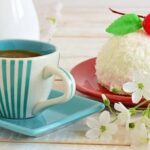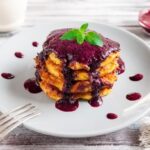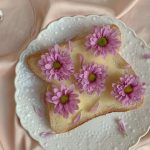Have you ever wondered how to make decorating frosting for cakes that not only tastes delicious but also looks stunning? The key to a visually appealing cake lies in the art of frosting. It is the frosting that adds the finishing touch, transforming a plain cake into a work of art. From simple designs to intricate patterns, decorating frosting plays a crucial role in elevating the overall look of a cake.
The importance of decorating frosting goes beyond just aesthetics; it also enhances the flavor and texture of the cake. Whether you prefer buttercream, cream cheese, or fondant, the type of frosting you choose can greatly impact the taste and presentation of your creation. By mastering the art of making decorating frosting at home, you can unleash your creativity and customize your cakes according to your preferences.
In this article, we will explore everything you need to know about making decorating frosting for cakes. From different types of frostings to essential ingredients and step-by-step instructions, we will guide you through the process of creating your own masterpiece.
So, if you’re ready to elevate your cake decorating skills and impress your friends and family with beautifully frosted confections, read on for expert tips and tricks on achieving the perfect consistency and flavor for your decorating frosting.
Types of Decorating Frosting
When it comes to decorating cakes, choosing the right type of frosting is crucial in achieving the desired look and taste. There are several different types of frosting that can be used for cake decorating, each offering a unique texture and flavor profile.
Buttercream Frosting
Buttercream frosting is a classic choice for cake decorating due to its smooth texture and creamy taste. Made from butter, powdered sugar, and vanilla extract, this frosting can be easily colored and flavored to suit any occasion. Buttercream frosting can be piped onto cakes to create intricate designs or spread evenly for a simple yet elegant finish.
Fondant
Fondant is a popular choice for professional cake decorators due to its versatility and ability to create smooth, seamless finishes on cakes. This type of frosting is made from sugar, water, and gelatin, giving it a pliable consistency that can be molded into various shapes and decorations. Fondant is often used for creating intricate detailing on wedding cakes or themed celebration cakes.
Cream Cheese Frosting
Cream cheese frosting offers a tangy twist to traditional buttercream frosting with the addition of cream cheese as the main ingredient. This type of frosting pairs well with carrot cake, red velvet cake, or any dessert that benefits from a slightly tart flavor profile. Cream cheese frosting is soft and spreadable, making it perfect for both filling layers and covering the entire cake with a deliciously creamy coating.
Understanding the different types of decorating frostings available can help you choose the best option for your next baking project. Whether you prefer buttercream for its simplicity or fondant for its professional finish, experimenting with different frostings can elevate your cake decorating skills to new heights.
Ingredients Needed
Buttercream Frosting
To make a classic buttercream frosting for cake decoration, you will need unsalted butter, powdered sugar, vanilla extract, heavy cream, and a pinch of salt. The butter should be softened at room temperature to ensure a smooth consistency when mixed with the other ingredients. Powdered sugar is essential for sweetness and structure in the frosting, while vanilla extract adds flavor. Heavy cream helps to achieve the desired texture of the frosting, and a pinch of salt balances out the sweetness.
Royal Icing
For those looking to create intricate designs on their cakes, royal icing is a popular choice. The main ingredients needed for royal icing are egg whites (or meringue powder), powdered sugar, and lemon juice or cream of tartar. Egg whites provide the base for this type of frosting, giving it a smooth and glossy finish when dry. Powdered sugar is used to sweeten and thicken the icing, while lemon juice or cream of tartar helps to stabilize the mixture.
Cream Cheese Frosting
Cream cheese frosting is a favorite for red velvet cakes and carrot cakes due to its tangy flavor profile. To make this type of frosting at home, you will need cream cheese, unsalted butter, powdered sugar, vanilla extract, and sometimes a small amount of heavy cream. Cream cheese should be softened before mixing with butter to ensure a creamy consistency.
Powdered sugar adds sweetness and structure to the frosting, while vanilla extract enhances the overall flavor profile. Adding a little heavy cream can help achieve the desired spreadable texture for decorating cakes beautifully.
Experimenting with different types of decorating frosting allows you to create unique and visually stunning cakes for any occasion. By using quality ingredients and following proper techniques, you can easily master how to make decorating frosting for cakes at home. Remember that practice makes perfect when it comes to cake decorating, so don’t be afraid to get creative and have fun with your designs.
Step-by-Step Instructions
Decorating frosting is an essential element in cake decorating as it not only adds sweetness but also plays a significant role in enhancing the overall visual appeal of the cake. While store-bought frosting can be convenient, making your own decorating frosting from scratch allows you to customize the flavor, color, and consistency according to your preference. In this detailed guide, we will walk you through the step-by-step process of creating your own delicious frosting for cakes.
To make decorating frosting at home, you will need a few key ingredients that are easy to find in most grocery stores. Here is a list of ingredients you will need:
- Butter: Unsalted butter is typically used as the base for decorating frosting
- Confectioners’ Sugar (Powdered Sugar): This ingredient adds sweetness and helps thicken the frosting
- Vanilla Extract: For added flavor
- Milk or Heavy Cream: To adjust the consistency of the frosting
Now that you have gathered all the necessary ingredients, follow these step-by-step instructions on how to make decorating frosting from scratch:
- Cream the butter until smooth using an electric mixer.
- Gradually add confectioners’ sugar and continue mixing until well combined.
- Add vanilla extract and mix until incorporated.
- Adjust the consistency by adding milk or heavy cream a little at a time until desired texture is achieved.
- Your homemade decorating frosting is now ready to be used on your favorite cakes.
Making your own decorating frosting gives you full control over the taste and appearance of your cakes. Experiment with different flavors and colors to create stunning designs that will impress your family and friends. With these simple steps, you can elevate your cake decoration game and enjoy delicious, homemade treats.
Tools and Equipment
When it comes to decorating cakes with frosting, having the right tools and equipment is essential to achieve a professional-looking finish. Whether you are a novice baker or an experienced cake decorator, having the proper tools can make the process smoother and more enjoyable. Here is a list of essential tools and equipment needed for frosting cakes:
- Offset Spatula: This tool is essential for applying and smoothing frosting on the cake’s surface.
- Piping Bags and Tips: Used for creating intricate designs, borders, and writing on cakes.
- Bench Scraper: Helps in achieving clean and straight edges when frosting cakes.
- Cake Turntable: A revolving platform that makes it easier to frost the cake evenly from all sides.
- Palette Knife: Ideal for creating textures and patterns in the frosting.
In addition to these basic tools, there are other gadgets like stencils, fondant smoothers, edible markers, airbrush kits, and more that can help take your cake decorating skills to the next level. Investing in high-quality tools will not only make the process more efficient but also elevate the overall presentation of your cakes.
Now that you have an idea of the necessary tools needed let’s move on to understanding how to use them effectively in our step-by-step guide on making decorating frosting for cakes.
- Prepare all your ingredients in advance
- Start by creaming together butter and powdered sugar until light and fluffy
- Add vanilla extract or any other flavorings as desired
Tips and Tricks
Decorating frosting is a crucial element in cake making, as it not only adds flavor but also enhances the overall appearance of the cake. Achieving the perfect consistency and texture of frosting can be a bit tricky, but with some expert tips and tricks, you can master the art of frosting cakes like a pro.
One key tip to keep in mind is to always start with room temperature ingredients, including butter and any liquids, as this helps ensure that your frosting comes together smoothly.
Another important aspect to consider when making decorating frosting is the ratio of wet to dry ingredients. This balance is essential in achieving the desired consistency of your frosting. If your frosting turns out too thick, you can add more liquid gradually until you reach the right texture. On the other hand, if your frosting is too thin, you can slowly add more powdered sugar until it thickens up.
Additionally, mixing technique plays a significant role in getting that silky smooth texture for your decorating frosting. To avoid incorporating air bubbles into your frosting which could lead to an uneven finish on your cake, it’s best to mix at low speed using a paddle attachment rather than a whisk attachment. A gentle hand while mixing will help you achieve that flawless finish on your cake with perfectly smooth and luscious frosting.
| Tips for Perfect Consistency | Expert Advice |
|---|---|
| Start with room temperature ingredients | This ensures a smooth blending process |
| Adjust wet to dry ingredient ratio | Helps achieve desired texture |
| Use gentle mixing technique | Avoids incorporating air bubbles for a smooth finish |
Coloring and Flavors
When it comes to decorating cakes, the coloring and flavors of the frosting play a crucial role in making the final product stand out. By customizing the frosting with different colors and flavors, you can create unique and visually appealing cakes for any occasion. In this section, we will explore how to add color and flavor to frosting to suit the theme or taste preferences of your cake.
To add color to your frosting, you can use gel food coloring or liquid food coloring. Gel food coloring is preferred by many decorators because it produces vibrant colors without altering the consistency of the frosting. Simply add a small amount of gel food coloring at a time and mix well until you achieve the desired shade. For pastel colors, start with a small amount and gradually increase until you reach the right hue.
In addition to coloring, adding flavor to your frosting can take your cake to the next level. Vanilla extract is a popular choice for adding flavor to frosting, but you can also experiment with other extracts like almond, lemon, or peppermint for a unique twist. Remember that a little goes a long way when it comes to flavoring, so start with small amounts and adjust to taste.
You can also incorporate citrus zest, cocoa powder, or fruit purees for natural flavorings that complement your cake perfectly. Experimenting with different combinations of color and flavor will allow you to create one-of-a-kind cakes that are sure to impress your friends and family.
Storage and Shelf Life
When it comes to preserving the quality of your decorating frosting, proper storage techniques are essential. The key is to keep the frosting in an airtight container to prevent it from drying out or absorbing any odors from the fridge. It is recommended to store the frosting in the refrigerator if you are not using it immediately. This will help maintain its freshness and prevent any potential spoilage.
It is important to note that different types of decorating frostings have varying shelf lives. Buttercream frosting, for example, can typically be stored in the refrigerator for up to two weeks. On the other hand, cream cheese frosting should be consumed within one week of making it. Always check for any signs of spoilage such as an off smell or appearance before using the frosting on your cakes.
To extend the shelf life of your decorating frosting, you can also freeze it for future use. Simply place the frosting in a freezer-safe container and store it in the freezer for up to three months. When you are ready to use it, allow the frosting to thaw in the refrigerator overnight and bring it back to room temperature before re-whipping it for a smooth consistency.
| Types of Frosting | Shelf Life |
|---|---|
| Buttercream Frosting | Up to two weeks in the refrigerator |
| Cream Cheese Frosting | Within one week of making |
| Fondant Frosting | Up to three months in the freezer |
Conclusion
In conclusion, mastering the art of decorating frosting is an essential skill for anyone looking to elevate their cake decorating game. By understanding the different types of frosting, knowing the necessary ingredients, following step-by-step instructions, and utilizing the right tools and equipment, anyone can create beautifully decorated cakes that are visually appealing.
Whether you are a beginner or an experienced baker, making your own decorating frosting at home allows for customization in terms of color and flavor to suit specific preferences and occasions.
It is important to note that achieving the perfect consistency and texture of decorating frosting may require some practice and patience. However, with the expert tips and tricks provided in this guide, you can improve your skills and create professional-looking cakes that will impress your family and friends. Experimenting with different colors, flavors, and techniques not only adds a personal touch to your creations but also enhances the overall presentation of your cakes.
Overall, making your own decorating frosting for cakes is a rewarding experience that allows you to unleash your creativity in the kitchen. By following the guidelines outlined in this article, you can take your cake decorating skills to the next level and enjoy the process of creating delicious works of art. So why not give it a try? Challenge yourself to make your own decorating frosting from scratch and see how it transforms your homemade cakes into stunning masterpieces.
Frequently Asked Questions
What Frosting Is Best for Decorating Cakes?
The best frosting for decorating cakes is buttercream frosting. Buttercream is versatile, easy to work with, and holds its shape well when piping intricate designs or borders on cakes. It also provides a smooth canvas for decorations.
How to Make a Cake Frosting at Home?
Making cake frosting at home is simple and allows for customization based on personal preference. A basic buttercream frosting can be made by creaming together butter and powdered sugar until light and fluffy, then adding vanilla extract and a splash of milk to achieve the desired consistency.
What Kind of Icing Do You Use for Piping Flowers?
When piping flowers on cakes, it’s best to use stiff consistency royal icing or buttercream icing. These types of icings hold their shape well, making it easier to create detailed flower designs with varying petal shapes and textures. Stiff icing also ensures that the flowers maintain their form without spreading or collapsing on the cake.

Welcome to my blog about home and family. This blog is a place where I will share my thoughts, ideas, and experiences related to these important topics. I am a stay-at-home mom with two young children. I hope you enjoy reading it! and may find some helpful tips and ideas that will make your home and family life even better!





